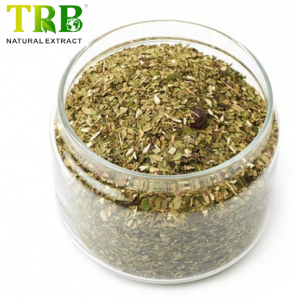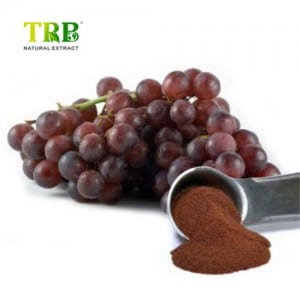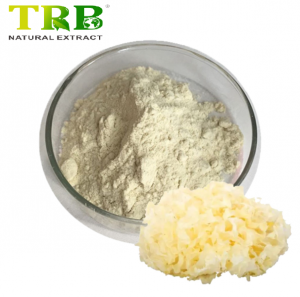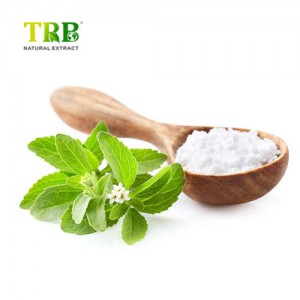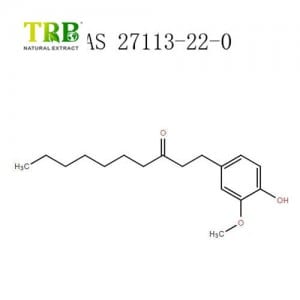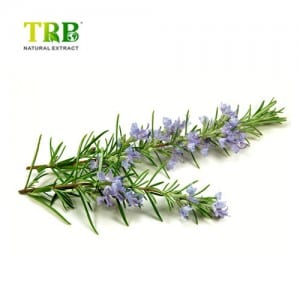We rely upon strategic thinking, constant modernisation in all segments, technological advances and of course upon our employees that directly participate inside our success for Nervonic Acid Powder, Hope we can make a more superb potential with you as a result of our attempts from the future.
We rely upon strategic thinking, constant modernisation in all segments, technological advances and of course upon our employees that directly participate inside our success for China Turkesterone and Bovine Collagen Peptide Powder, Our products are widely recognized and trusted by users and can meet continuously changing economic and social needs. We welcome new and old customers from all walks of life to contact us for future business relationships and mutual success!
| Product Name | Nervonic Acid Bulk Powder |
| Other Name | (Z)-tetracos-15-enoic acid, cis-15-tetracosenoic acid, selacholeic acid, omega-9 long chain fatty acid, purpleblow maple, 24:1 cis, 24:1 omega 9, 15-TETRACOSENOIC ACID (Z-), Acide nervonique |
| CAS Number | 506-37-6 |
| Molecular formula | C24H46O2 |
| Molecular weight | 366.62 g/mol |
| Melting point | 42.5~43.0 °C |
| Specification | 75%,85%, 90%, 98% |
| Appearance | Off White to White Powder |
| Solubility | insoluble (slightly soluble ) |
| Benefits | Improve memory and brain health |
| Applications | Dietary supplements, Medicine |
| Shipment | By courier (FedEx, UPS, DHL), By air, By sea |
| Recommended dosage | 200mg~300mg per day |
| Package | 1kg/bag, 25kg/drum |
| Shipment | By courier (FedEx, UPS, DHL), By air, By sea |
What’s Nervonic acid?
In the above introduction, we mentioned that nervonic acid (24:1, n-9) is a fatty acid, a monounsaturated analog of lignosulfonic acid (24:0). It is also known as selenic acid and cis-15-tetraenoic acid.
It exists as an elongation product of oleic acid (18:1,9), and its direct precursor is erucic acid. Nervonic acids are particularly abundant in animal white matter and the brain. In recent years, data have shown that nerve cells’ intermediate product of myelin biosynthesis is nervonic acid. It is the most abundant in nerve tissue and brain tissue. Nervonic acid is also an essential component of the cell membrane. The nervonic acid structure is as follows:

Nervonic acid Sources
Nervonic acid (24 carbon atoms) was first discovered in the fat of Elasmo tributaries by Tsujimoto M. in 1927. In subsequent scientific studies, it was further found that it existed as glycerol ester in the fish oil of the Centrophorus granular fish liver oil and was high in the cruciferous plant Lunaria Annua (22-25%).
Among all omega fatty acids, omega-9, known as nervonic acid, maybe the rarest and least valued. In our daily life, there are many sources of nervonic acids. Generally, it can be divided into animal and plant sources. (Nervonic acid food sources as follows: )

Animal sources
As mentioned above, nervonic acid was first found in the sphingolipids of marine animals such as sharks. They mainly exist in nerves and brain tissues, including the white matter of the animal brain and myelin sheath. Due to the protection of marine resources, legal restrictions, and high production costs, it is impossible to put nervonic acid into the daily supplement market only from fish sources. Therefore, people began to find and extract nervonic acid from plants.
Plant sources
Like most Omega-9 fatty acids, nervonic acid is almost entirely contained in seed oils. Accredited on the market include Malania oleifera, Lunaria annua (honesty), Tropaeolum speciosum, Borago officinalis, Acer Truncatum (purple maple), Cardamin graeca, etc. Among the storage lipids, nervonic acid was found as triacylglycerol (TAG).
Malania oleifera (Olacaceae) is an evergreen broad-leaved tree native to southwestern China and is an important oil-seed tree species. Its seed oil contains high levels of nervonic acid (cis-tetracycline-15- oleic acid), more than 60%.
However, Malania oleifera is a threatened species and has been listed on the list of important protected wild plants in China. Therefore, Acer truncatum Bunge is currently considered the best natural source of the highest yield of nervonic acid in the market. Here are data on fatty acid distribution in Acer truncatum Bunge (seed oil):

Know more about Chinese Acer truncatum Bunge
Acer truncatum Bunge originated in Gansu, Hebei, Henan, Jiangsu, Jilin, Liaoning, Inner Mongolia, Shaanxi, Shandong, Shanxi, and other provinces. Traditionally, Acer truncatum Bunge is an important tree species for afforestation and water and soil in China. Protect ecological balance and bring social and environmental benefits.
Acer truncatum Bunge can be planted artificially and produce fruits (seeds) within four to six years after planting. It can develop its full potential about eight to ten years after planting. Therefore, by large-scale planting, the nerve acid from Acer truncatum has solved the demand for nervonic acid in the daily supplement market. At the same time, it reduces the high price of nervonic acid and lowers the price threshold for people to use.
Nervonic acid benefits
Scientists have found that nervonic acid is an essential nutrient for the growth and maintenance of the brain, and nervonic acid has been found in breast milk: It is said to accelerate the development of infants. This is why pregnant and lactating women are recommended to eat more nervonic acid food.
Nervonic acid and psychosis reduced.
The evidence of abnormal levels of polyunsaturated fatty acids in schizophrenic patients. Consistent with these findings, fatty acids, especially Omega-3 and Omega-9 fatty acids (Nervonic acid), maybe affect the treatment of schizophrenia and be useful in preventing mental illness. Supplementation of long-chain Omega-9 fatty acids reduces the risk of progression to mental illness and provides a safe and effective indicator prevention strategy for individuals at high risk of mental illness. (Here are white matter abnormalities and nervonic acid levels in schizophrenia)

Supporting Brain Health
Nervonic acid usually exists in the sphingolipid of white matter in the human brain. It is the most abundant in nerve and brain tissue, an essential component of the cell membrane. Nervonic acid plays a vital role in the biosynthesis of myelin in nerve cells. It can treat demyelinating-related diseases, such as adrenoleukodystrophy and multiple sclerosis. Nervonic acid levels in sphingolipids are often low in these diseases.
Prevention and improvement of Alzheimer’s disease
In recent years, global attention to Alzheimer’s disease has become increasingly concentrated, which seems to be the concern of any family for the elderly. However, the study found that nervonic acid can promote the regeneration and growth of neurons, repair and dredge nerve information, and nerve fiber transfer highway to dredge brain pathways, repair damaged cranial nerve cells, and encourage cranial nerve regeneration. Nervonic acid increases the energy of brain cells, promotes cell proliferation and differentiation, prevents aging and injury of cranial nerve cells, and restores clear perception, discrimination, learning, and memory. Nervonic acid can effectively prevent Alzheimer’s disease.
Other benefits
Organizations tested the concentration of nervonic acids in the subjects’ plasma and found a positive correlation between the content of nervonic acid and depressive symptoms. Researchers have proved that nervonic acid can effectively regulate blood lipids, reduce cholesterol in vivo, and has excellent benefits for cardiovascular diseases. There is also evidence that nervonic acid has therapeutic effects on cataracts and epilepsy.
Nervonic acid side effects
So far, no structure or tissue has provided any information about the side effects of neuro acid. Meanwhile, in 2011, the Chinese government designated “Acer truncatum Bunge Seed Oil” as the “New Resources Food Catalogue,” proving that the nerve acids as the source of Acer truncatum Bunge seed oil are safe.
Nervonic acid supplement application
In addition to the above, nervonic acid is directly prepared into capsules or tablets to support brain and cardiovascular applications. Others are used to make food or dietary compositions for infant or infant compositions or adult foods but are not limited to infant foods, milk, infant milk, butter, chocolate, salad dressing, margarine, cheese sauce, powder, granules and tablets, capsules, baking products, pies and seafood products containing them.
There are already examples of the combination of nervonic acid and curcumin in the market to maximize the effect. (Supplements containing nervonic acid on Amazon showed)

Nervonic acid dosage
Because nervonic acid is almost insoluble in water, they are often sold in nervonic acid capsules. Two capsules are taken orally twice daily, one in the morning and the other in the evening.
- Adult: The recommended dose ranges from 200 to 300 mg of pure nervonic acid.
- Pregnant woman: For pregnant and lactating women, the recommended dosage of nervonic acid is about 5-80 mg/day, the optimal dosage is about 5-50 mg/day, and the optimal dosage is about 8-32 mg/day.
- Baby: 7 mg/kg body weight. According to the infant’s weight calculation, the minimum cannot be less than 30mg/kg. Although there is no maximum intake limit, the best control is within the maximum of 200-300mg/kg.
